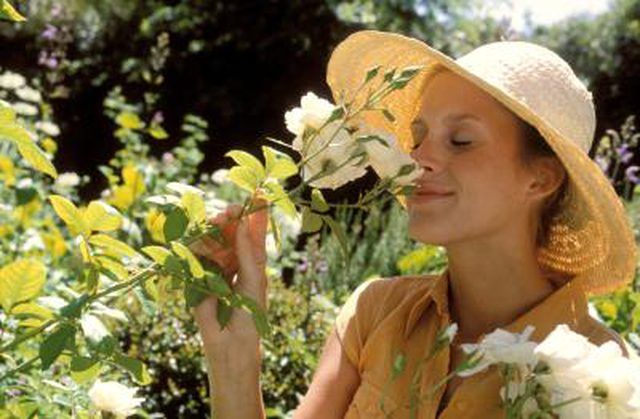Bulbs
Flower Basics
Flower Beds & Specialty Gardens
Flower Garden
Garden Furniture
Garden Gnomes
Garden Seeds
Garden Sheds
Garden Statues
Garden Tools & Supplies
Gardening Basics
Green & Organic
Groundcovers & Vines
Growing Annuals
Growing Basil
Growing Beans
Growing Berries
Growing Blueberries
Growing Cactus
Growing Corn
Growing Cotton
Growing Edibles
Growing Flowers
Growing Garlic
Growing Grapes
Growing Grass
Growing Herbs
Growing Jasmine
Growing Mint
Growing Mushrooms
Orchids
Growing Peanuts
Growing Perennials
Growing Plants
Growing Rosemary
Growing Roses
Growing Strawberries
Growing Sunflowers
Growing Thyme
Growing Tomatoes
Growing Tulips
Growing Vegetables
Herb Basics
Herb Garden
Indoor Growing
Landscaping Basics
Landscaping Patios
Landscaping Plants
Landscaping Shrubs
Landscaping Trees
Landscaping Walks & Pathways
Lawn Basics
Lawn Maintenance
Lawn Mowers
Lawn Ornaments
Lawn Planting
Lawn Tools
Outdoor Growing
Overall Landscape Planning
Pests, Weeds & Problems
Plant Basics
Rock Garden
Rose Garden
Shrubs
Soil
Specialty Gardens
Trees
Vegetable Garden
Yard Maintenance
How to Build a Flower Bed With Landscape Timbers
How to Build a Flower Bed With Landscape Timbers. Using landscape timbers to build a flower bed is an ideal way to enjoy the benefits of a raised garden bed. Just two layers of 6-by-6 timbers allows for enough depth to greatly improve the quality of your soil, and a simple 8-foot by 4-foot bed allows the gardener easy access from all sides. Add to...

Using landscape timbers to build a flower bed is an ideal way to enjoy the benefits of a raised garden bed. Just two layers of 6-by-6 timbers allows for enough depth to greatly improve the quality of your soil, and a simple 8-foot by 4-foot bed allows the gardener easy access from all sides. Add to this the fact that raised beds help decrease back strain while tending to the garden, and it's easy to understand their appeal.
Things You'll Need
4 6-by-6 landscape timbers in 8-foot lengths
4 6-by-6 landscape timbers in 4-foot lengths
Circular saw
Flat-edged shovel
Trench shovel
Drill with 1/2-inch bit
4-foot level
Large hammer
10 18-inch pieces of rebar
10 10-inch timber screws
Topsoil and compost
Select the desired area for your flower bed, taking into consideration the amount of daily sunlight the area receives. The type of flowers you intend to grow is the determining factor. If you're going to be planting sun-loving flowers, you'll want to avoid building it in an area that receives substantial afternoon shade.
Use a circular saw to cut 5 1/2 inches from the length of each piece of timber. Because the true measurement of 6-by-6 timbers is actually 5 1/2 inches, this will allow for the fact that the timbers will sit end-to-side at each corner. Lay down your cut timbers in the desired location and mark the outline with a shovel.
Remove the timbers and excavate any grass and weeds within the outline of your bed, using a flat-edged shovel. Use a trench shovel to make a 6-inch deep trench along the outer edge of the bed area and fill with gravel. This will aid in drainage, directing water away from the timbers, prolonging the life of your flower bed.
Lay the first four timbers back in their positions, making sure that each end butts against the side of the next timber in a clockwise fashion. Make pilot holes every 2 feet with a drill and a 1/2-inch bit. Use a 4-foot level to check that the timbers are level, and adjust the amount of gravel as needed.
Hammer in a piece of rebar through one of the drilled pilot holes. Hammer it in until it's flush with the top of the piece of timber. Repeat this with a piece of rebar for each of the remaining pilot holes. Because they're going into the ground at a depth of 12 inches, this will give you a solid base to your flower bed.
Lay the next level of timbers on top of the base layer, but in a counterclockwise fashion so that the corners overlap in the opposite direction from the first layer. This will offer the planter even more stability. Attach this second layer of timbers to the first level using two timber screws at each corner and two more evenly spaced on each of the four sides.
Fill the raised bed with a mix of topsoil and composted matter, adding it until it's almost level with the top of the bed. Water the soil thoroughly and leave the soil to dry. When the soil is dry, you may find that you have to add a little more topsoil to refill because of settling of the soil. After doing this, you can now fill the flower bed with the plants of your choice.
Tips & Warnings
If longevity of the flower bed is a concern, choose a decay-resistant wood like redwood or cedar. Although it's a little more expensive, it's a more environmentally sound decision than using pressure-treated lumber, which can leech toxic preservatives into the soil.
If you're building a bed on top of clay soil rather than a sandy soil, you can improve the drainage by adding a 2-inch layer of gravel before adding topsoil.
Feel free to change the dimensions of your flower bed to suit the layout of your garden, but be careful with the width. Anything wider than 4 feet will make it difficult to comfortably reach the center of the bed to tend to your garden.
Do not use railroad ties for your raised bed. Although they do offer a nice rustic look, they are usually treated to resist rotting and are prone to leaking creosote into soil. This can be particularly hazardous if you grow vegetables or fruits in your bed.